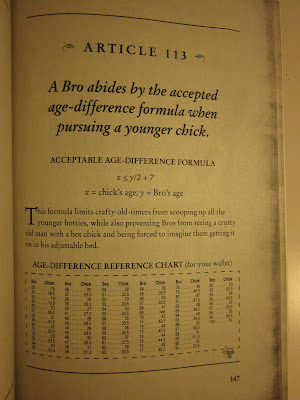Western family has the tradition of cooking Turkey in Thanksgiving. I personally haven't got the chance to taste this famous dish, however, I saw this chinese thanksgiving recipe on a blog, which exhibits those photos of homemade Beijing Duke. So delicious and makes me homesick.
A recipe stolen from a blog presents as following:
You Would Love It.....
烤鸭做法: Procedure of toasting the duke:
1、鸭子1只,化冻后洗净去内脏,用盐里外均匀的抹一遍。
1. One Duke, unfreeze it. Clear the belly, then smear salt all over the duke( inside and outside)
2、用蚝油、花椒粉、五香粉或13香调成酱,将腹腔抹一遍。
2. Use oyster sauce, chinese prickly ash, the five spices powder (prickly ash, str aniseed, cinnamon, clove and fennel), smear all over the inside of the belly.
3、腹中填葱段、姜片、桂皮、八角、香叶,用牙签封口
3. stuff the duke with chopped scallion, ginger,cinnamon, star anise and myrcia, seal the duke with toothpick.
4、烧一锅开水,一直开大火保持水温,不断用开水浇烫鸭子全身约3分钟,使鸭皮紧绷。
4. Boil a pot of hot water, keep the temperature above 80 centigrade. watering the duke with hot water consistently about 3 mins. It will help the duke skin firm.
5、放在通风处风干半天,鸭皮全干后,用蜂蜜、香醋和生抽(3:1:1)调成汁,刷遍鸭子的全身,继续风干12小时以上(我是头天夜里刷的汁,第二天傍晚烤的,约20小时)
5. Now comes to the waiting time. Put the duke in a well ventilated place, until the duke skin dried. Meanwhile, prepare a mix sauce of honey, vinegar and soy sauce (3:1:1). When the duke is dry, smear it with the sauce all over. Then continue drying for about 12 hours or more. You can do the preparation on the night, and roast it the next night.
6、烤前再刷一遍汁,入烤箱,华氏300°F(约摄氏150°C)烤2小时。其中1小时后拿出来再刷一遍汁,并且把腿和翅膀用锡纸包住,防止烤糊。(实践证明原来翅膀是整个全翅都要包住,我这次就把翅膀烤黑了一点)
6. Before you put the duke in the oven, smear the mix sauce again. Wrap the duke with tinfoil. Tune the oven to 300°F , time for 1 hour first. Smear again, then 1 hour again.
Pay Attention: wrap the duke including the wings and legs.
7、烤好后的鸭子用刀片成连皮带肉的鸭片,放在荷叶饼中,加甜面酱和切好的葱丝后卷起来吃。
7. when you hear the "Ding", the duke is done. What you need to do now is to slice it, and warp the duke with the beijing sweet sauce into the flak cake.
荷叶饼(煎制版):The flat cake:
材料:Materials:
All purpose flour:800g, hot water 640ml, a cup of vegetable oil ( 60 pieces of flat cakes)
做法:Procedure:
1、水烧开,滚水倒入面粉中,一边倒一边搅拌,揉成几乎光滑的面团(如果太烫可以稍微放凉一些再揉),用略拧干的湿布盖好放一边醒1小时左右。
2、醒好的面先揉匀,后揪成大小均等的剂子(约乒乓球大小),用手稍微压扁。
3、三个为一个单位,把其中两个小圆饼的一层涂抹上薄油,一层一层的叠起来(最上面一层不要涂),然后用擀面杖擀成圆薄饼。
4、放入平底锅用中小火煎,不需再放油,中间稍微鼓起来后即可反面,再次鼓起后即可盛起。
5、煎好后的饼沿边缘轻轻撕开,即可撕成3个荷叶薄饼。
甜面酱加工:
1、热锅热油后转小火,倒入买来的甜面酱炒香
2、加入适量白糖和水,不停搅拌均匀,待糖化匀后,即可盛起(也可以在起锅前撒些香油)
Tips:
1、在制作荷叶饼时,也可以两个小面饼中抹油擀成一张薄饼,这样就撕出来两张分别是一面脆一面软的荷叶饼。有人爱吃这种,有的人却喜欢吃两面都软的,那么就可以用以上的3个小面饼层叠的方式,这样中间的那层煎出来就两面都是软的。可以为不同的朋友提供不同选择。
2、做好后的荷叶饼如果不马上吃,要用湿布盖上,防止变干硬。
3、甜面酱还需要加工,是因为很多甜面酱买来的时候太浓稠,且主要是以咸味为主甜味较少,所以需要加糖加水。另外,也是用油把甜面酱炒香。
4、鸭架汤是一只烤鸭最棒的副产品。烤鸭剔下鸭肉后留下的鸭架子,放入锅中加水加少许盐慢慢熬,熬出来的汤是奶白色的,撒一点葱花再喝,非常鲜美。






















